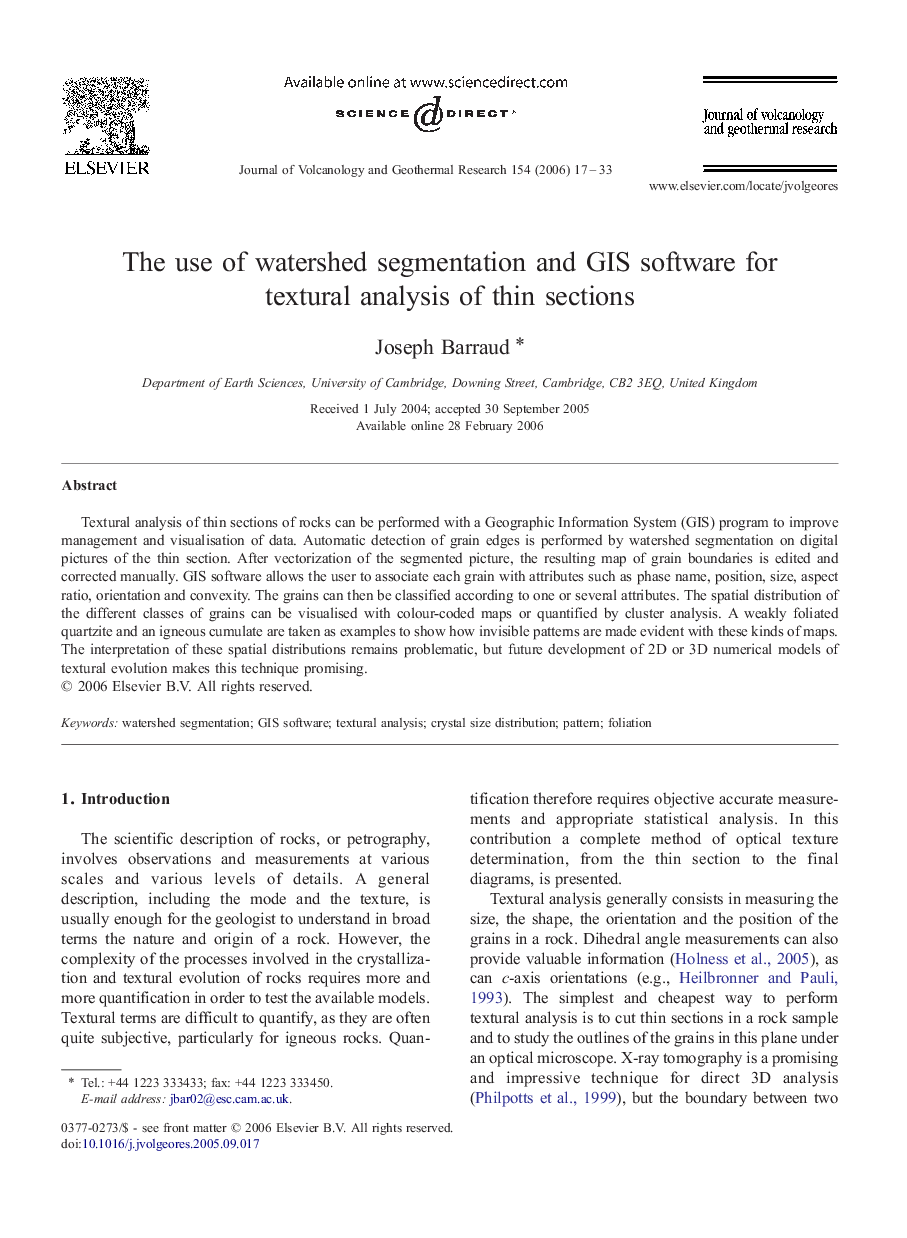| Article ID | Journal | Published Year | Pages | File Type |
|---|---|---|---|---|
| 4715084 | Journal of Volcanology and Geothermal Research | 2006 | 17 Pages |
Textural analysis of thin sections of rocks can be performed with a Geographic Information System (GIS) program to improve management and visualisation of data. Automatic detection of grain edges is performed by watershed segmentation on digital pictures of the thin section. After vectorization of the segmented picture, the resulting map of grain boundaries is edited and corrected manually. GIS software allows the user to associate each grain with attributes such as phase name, position, size, aspect ratio, orientation and convexity. The grains can then be classified according to one or several attributes. The spatial distribution of the different classes of grains can be visualised with colour-coded maps or quantified by cluster analysis. A weakly foliated quartzite and an igneous cumulate are taken as examples to show how invisible patterns are made evident with these kinds of maps. The interpretation of these spatial distributions remains problematic, but future development of 2D or 3D numerical models of textural evolution makes this technique promising.
